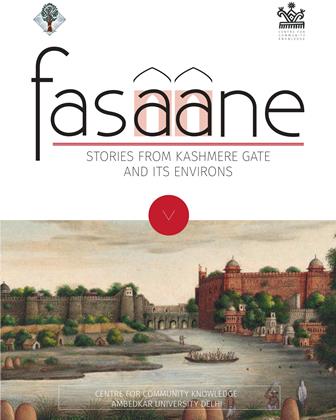 In 1842, Mirza Ghalib arrived at the gate of the campus of what is now Dr. B. R. Ambedkar University Delhi as a candidate for the post of the Persian professor at the Delhi College. Feeling slighted because the principal did not come out to greet him, the poet turned his palanquin away, and Delhi College missed an opportunity to have Ghalib as its faculty. Anecdotes like this are interspersed throughout this catalogue, allowing for a perspective on Delhi’s history that is often absent. Centred around the Dara Shukoh Library building, this part of the city of Delhi has witnessed many changes. It has seen patronage by the who’s who of Shahjahanabad. It was witness, also, to the fall of empires. It has known murders, intrigues, battles and transitions both drastic and inane. Kashmere Gate has known both triumph and gloom. Memories of the residents, and little known historical narratives, come together to give an insight into this corner of Shahjahanabad in Fasaane.
In 1842, Mirza Ghalib arrived at the gate of the campus of what is now Dr. B. R. Ambedkar University Delhi as a candidate for the post of the Persian professor at the Delhi College. Feeling slighted because the principal did not come out to greet him, the poet turned his palanquin away, and Delhi College missed an opportunity to have Ghalib as its faculty. Anecdotes like this are interspersed throughout this catalogue, allowing for a perspective on Delhi’s history that is often absent. Centred around the Dara Shukoh Library building, this part of the city of Delhi has witnessed many changes. It has seen patronage by the who’s who of Shahjahanabad. It was witness, also, to the fall of empires. It has known murders, intrigues, battles and transitions both drastic and inane. Kashmere Gate has known both triumph and gloom. Memories of the residents, and little known historical narratives, come together to give an insight into this corner of Shahjahanabad in Fasaane.
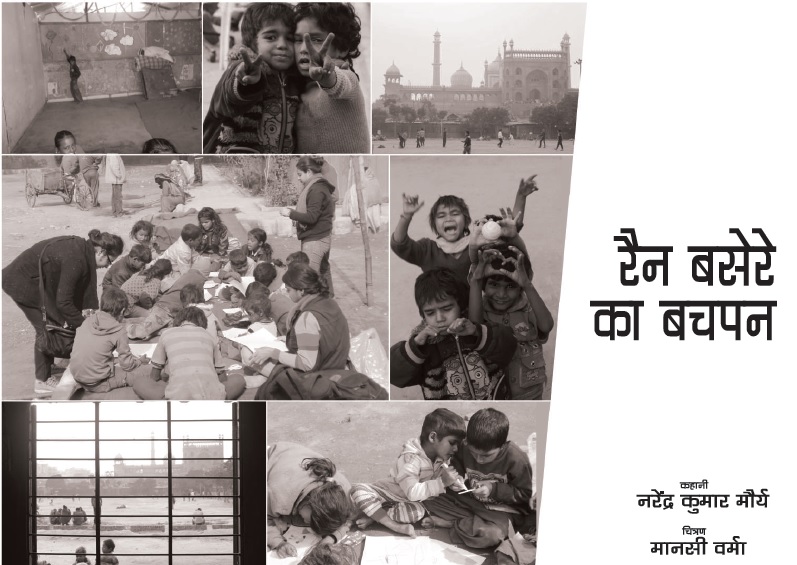 This collection of stories about growing up in the city emerged from the Delhi Citizens Memory programme at Centre for Community Knowledge (CCK) at Dr. B. R. Ambedkar University Delhi This multi year, multi dimensional oral history and narratives programme, has diverse elements that together are helping build up a lived experience of Delhi. Drawing on memories and recollections of childhood both of the present day and yester-year, these stories and others like it play two important roles. Listening to these, or even reading them, we are reminded of the excitement of childhood, of how all of us actively engage with the landscapes we occupied as children. At another level, the stories draw attention to the ways personal memories are channelled through familial and other collective memories. The stories remind us how wider social, cultural, economic and political events and systems influence children's everyday lives, and how children negotiate childhood in relation to the spaces they occupy. As Delhi has expanded enormously in the years since independence, more and more residents are now city-born rather than born elsewhere. As the constraints of a booming metropolis affects places and spaces for children to play and wander, these stories remind us that constraints are not unique to this age. Each age has had its own limitations, and these stories tell us how the changing experiences of childhood show how children (even as adults) find the place to experience the city in unique and unusual ways.
This collection of stories about growing up in the city emerged from the Delhi Citizens Memory programme at Centre for Community Knowledge (CCK) at Dr. B. R. Ambedkar University Delhi This multi year, multi dimensional oral history and narratives programme, has diverse elements that together are helping build up a lived experience of Delhi. Drawing on memories and recollections of childhood both of the present day and yester-year, these stories and others like it play two important roles. Listening to these, or even reading them, we are reminded of the excitement of childhood, of how all of us actively engage with the landscapes we occupied as children. At another level, the stories draw attention to the ways personal memories are channelled through familial and other collective memories. The stories remind us how wider social, cultural, economic and political events and systems influence children's everyday lives, and how children negotiate childhood in relation to the spaces they occupy. As Delhi has expanded enormously in the years since independence, more and more residents are now city-born rather than born elsewhere. As the constraints of a booming metropolis affects places and spaces for children to play and wander, these stories remind us that constraints are not unique to this age. Each age has had its own limitations, and these stories tell us how the changing experiences of childhood show how children (even as adults) find the place to experience the city in unique and unusual ways.
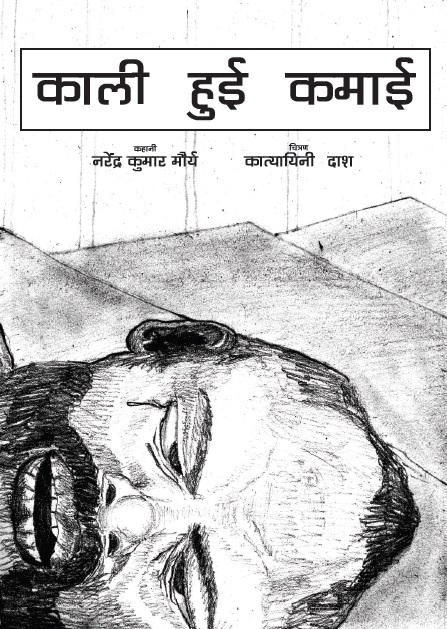 This collection of stories about growing up in the city emerged from the Delhi Citizens Memory programme at Centre for Community Knowledge (CCK) at Dr. B. R. Ambedkar University Delhi. This multi year, multi dimensional oral history and narratives programme, has diverse elements that together are helping build up a lived experience of Delhi. Drawing on memories and recollections of childhood both of the present day and yester-year, these stories and others like it play two important roles. Listening to these, or even reading them, we are reminded of the excitement of childhood, of how all of us actively engage with the landscapes we occupied as children. At another level, the stories draw attention to the ways personal memories are channelled through familial and other collective memories. The stories remind us how wider social, cultural, economic and political events and systems influence children's everyday lives, and how children negotiate childhood in relation to the spaces they occupy. As Delhi has expanded enormously in the years since independence, more and more residents are now city-born rather than born elsewhere. As the constraints of a booming metropolis affects places and spaces for children to play and wander, these stories remind us that constraints are not unique to this age. Each age has had its own limitations, and these stories tell us how the changing experiences of childhood show how children (even as adults) find the place to experience the city in unique and unusual ways.
This collection of stories about growing up in the city emerged from the Delhi Citizens Memory programme at Centre for Community Knowledge (CCK) at Dr. B. R. Ambedkar University Delhi. This multi year, multi dimensional oral history and narratives programme, has diverse elements that together are helping build up a lived experience of Delhi. Drawing on memories and recollections of childhood both of the present day and yester-year, these stories and others like it play two important roles. Listening to these, or even reading them, we are reminded of the excitement of childhood, of how all of us actively engage with the landscapes we occupied as children. At another level, the stories draw attention to the ways personal memories are channelled through familial and other collective memories. The stories remind us how wider social, cultural, economic and political events and systems influence children's everyday lives, and how children negotiate childhood in relation to the spaces they occupy. As Delhi has expanded enormously in the years since independence, more and more residents are now city-born rather than born elsewhere. As the constraints of a booming metropolis affects places and spaces for children to play and wander, these stories remind us that constraints are not unique to this age. Each age has had its own limitations, and these stories tell us how the changing experiences of childhood show how children (even as adults) find the place to experience the city in unique and unusual ways.
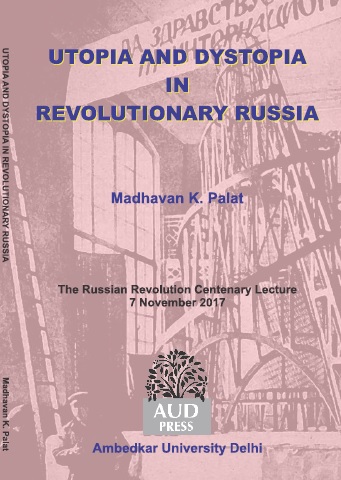 Utopia is a place or as it literally means, a no place, in Thomas More’s Greek pun,1 one that does not exist, cannot exist,2 but ideally should come into being as the good place, the Eutopia. Many utopian projects, be it beauty that never fades or the return to Eden, cannot be realized because nature does not permit them. But utopia was a dream, it provided orientation and hope, it allowed people to think that life could be beautiful, happy, just and inspiring rather than ugly, miserable, oppressive and squalid. The ideal was ahistorical and the vision was static; outside time, it did not belong to the past, the present, or the future; as a concept it was and is often still regarded as dogmatic and closed. As a place it was located beyond normal life, isolated and secluded, the better for creativity and purity free of the miasmas of our polluted world. It entailed more often than not an extraordinary journey to a remote abode, to an island far away, to a forgotten settlement in the empty steppe, to a remote mountain retreat.
Utopia is a place or as it literally means, a no place, in Thomas More’s Greek pun,1 one that does not exist, cannot exist,2 but ideally should come into being as the good place, the Eutopia. Many utopian projects, be it beauty that never fades or the return to Eden, cannot be realized because nature does not permit them. But utopia was a dream, it provided orientation and hope, it allowed people to think that life could be beautiful, happy, just and inspiring rather than ugly, miserable, oppressive and squalid. The ideal was ahistorical and the vision was static; outside time, it did not belong to the past, the present, or the future; as a concept it was and is often still regarded as dogmatic and closed. As a place it was located beyond normal life, isolated and secluded, the better for creativity and purity free of the miasmas of our polluted world. It entailed more often than not an extraordinary journey to a remote abode, to an island far away, to a forgotten settlement in the empty steppe, to a remote mountain retreat.
Author: Madhavan K. Palat, ISBN 987-81-932636-0-0
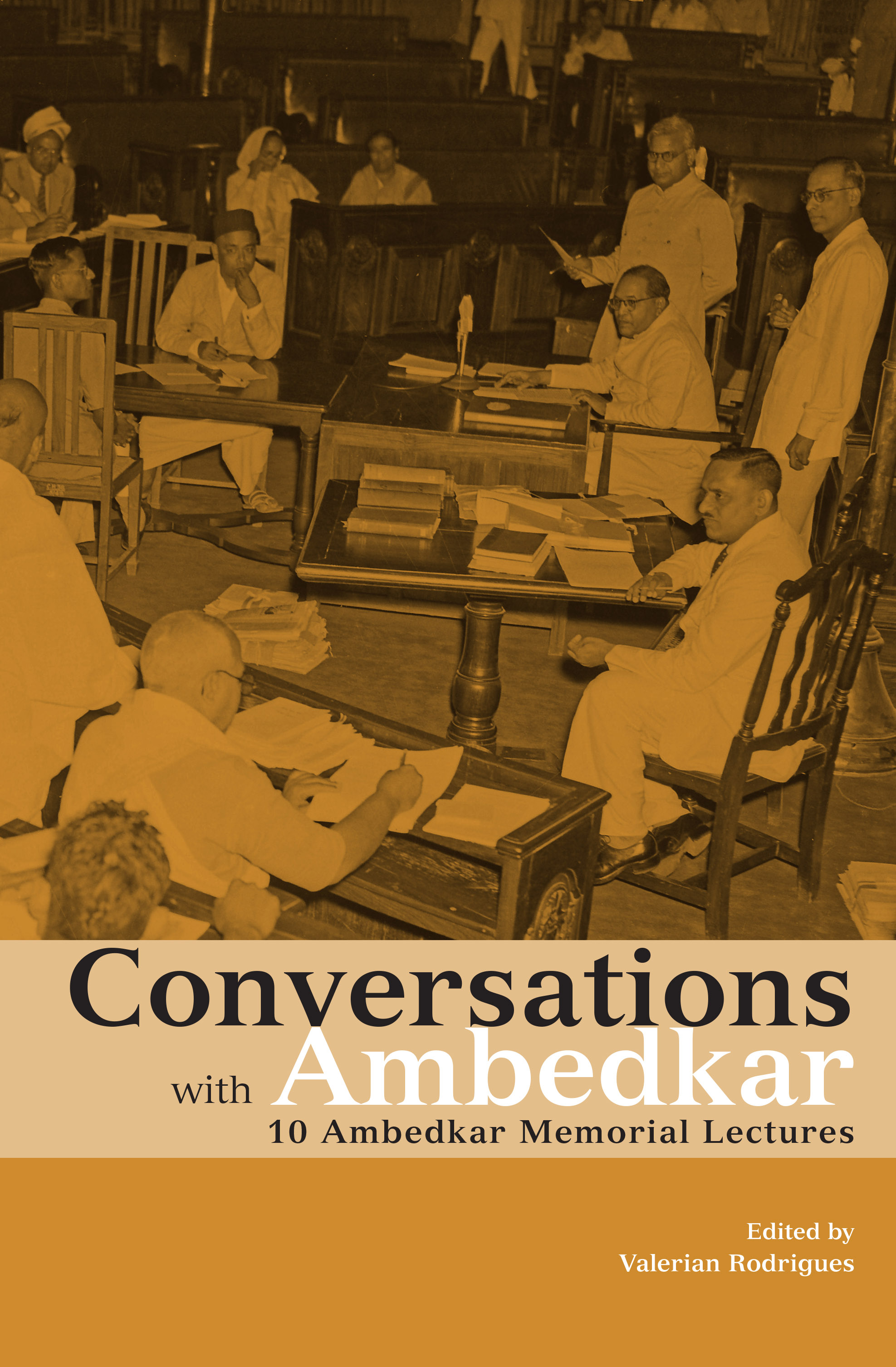 The lectures at Dr. B. R. Ambedkar University Delhi brought together in this volume dwell on some of the most telling concerns that our age confronts: concerns of justice, social closures, bare life and sovereign power, political agency, discrimination and affirmative action, displacement and migration, new modes and languages of command and control, social movements under the shadow of global capital, and politics of epistemic and normative frames on offer today. While several of the lectures take off from some of Dr. B.R. Ambedkar’s writings and interventions, others meet Ambedkar in shared concerns by remaining within the frame of their distinct academic specialisation or professional pursuits. The result is a deep conversation where scholarship and social concerns converge, begetting a complex tapestry of their own. The introduction to the volume, which highlights the distinctiveness of Ambedkar as a scholar and the scholarship that goes in his name, acts as a connecting thread to the themes and concerns mounted in these lectures. This volume is envisaged as the first in a series of dialogues with Ambedkar and his thought as embodied in the annual Dr B.R. Ambedkar Memorial Lecture series. The first ten lectures (2009–18) presented here mark the first decade in the life of Ambedkar University Delhi.
The lectures at Dr. B. R. Ambedkar University Delhi brought together in this volume dwell on some of the most telling concerns that our age confronts: concerns of justice, social closures, bare life and sovereign power, political agency, discrimination and affirmative action, displacement and migration, new modes and languages of command and control, social movements under the shadow of global capital, and politics of epistemic and normative frames on offer today. While several of the lectures take off from some of Dr. B.R. Ambedkar’s writings and interventions, others meet Ambedkar in shared concerns by remaining within the frame of their distinct academic specialisation or professional pursuits. The result is a deep conversation where scholarship and social concerns converge, begetting a complex tapestry of their own. The introduction to the volume, which highlights the distinctiveness of Ambedkar as a scholar and the scholarship that goes in his name, acts as a connecting thread to the themes and concerns mounted in these lectures. This volume is envisaged as the first in a series of dialogues with Ambedkar and his thought as embodied in the annual Dr B.R. Ambedkar Memorial Lecture series. The first ten lectures (2009–18) presented here mark the first decade in the life of Ambedkar University Delhi.
Valerian Rodrigues, the editor of the volume, is currently Ambedkar Chair, Dr. B. R.Ambedkar University Delhi. His recent books include The Essential Writings of B. R. Ambedkar (2002), The Indian Parliament: A Democracy at Work (2011, co-authored with B. L. Shankar), and Speaking for Karnataka (2018, co-authored with Rajendra Chenni, Nataraj Huliyar and S. Japhet). He served as a member of the Advisory Committee for the international conference, ‘Quest for Equity: Reclaiming Social Justice, Revisiting Ambedkar’, held in Bangalore during 21–23 July 2017.
Contributors to the volume: Upendra Baxi, Homi K. Bhabha, Veena Das, Gopalkrishna Gandhi, Gopal Guru, Ashis Nandy, Deepak Nayyar, Bhikhu Parekh, Aruna Roy, Romila Thapar
Edited by Valerian Rodrigues Foreword by Shyam B. Menon
Published by Dr. B. R. Ambedkar University Delhi in association with Tulika Books. Social Science • February 2019 • 6.25 x 9.5 inches • (xiv+254) 268 pages • Hardback • ISBN: 978-81-937329-5-3 • Rs 750
 The Exhibition TIME, SPACE, DIRECTION showcases the evolution of cartographic representations of the Indian Ocean Region and divergences therein from antiquity to the pre- modern age. While a number of maps are evidently Eurocentric, an attempt has been made to exhibit regional divergences, including Indian approximations and indigenous mapping traditions. Although there are grounds to suppose that the subcontinent produced maps for various purposes for millennia before the advent of the Portuguese, virtually little in the way of earlier cartography or its various forms have been visible, even in comparison with those of the neighbouring regions of the Gulf, Arabian Sea and East Asia. Given the region’s contributions to astronomy, geometry, mathematical sciences, this remains a matter for wonder. This, in turn, gives rise to a few questions: what kinds of cartographic tradition or mapping tradition were found in the region; what reasons can support existence of comparatively few specimens of charts and maps; how does one define ‘map’; and should our ‘western’ understanding of maps lead us to dismiss other forms of representations of time, space and direction. In an attempt to redress this deficit, the current Exhibition has brought together number of examples of cartographic representation from traditions and communities around the Indian Ocean Region.
The Exhibition TIME, SPACE, DIRECTION showcases the evolution of cartographic representations of the Indian Ocean Region and divergences therein from antiquity to the pre- modern age. While a number of maps are evidently Eurocentric, an attempt has been made to exhibit regional divergences, including Indian approximations and indigenous mapping traditions. Although there are grounds to suppose that the subcontinent produced maps for various purposes for millennia before the advent of the Portuguese, virtually little in the way of earlier cartography or its various forms have been visible, even in comparison with those of the neighbouring regions of the Gulf, Arabian Sea and East Asia. Given the region’s contributions to astronomy, geometry, mathematical sciences, this remains a matter for wonder. This, in turn, gives rise to a few questions: what kinds of cartographic tradition or mapping tradition were found in the region; what reasons can support existence of comparatively few specimens of charts and maps; how does one define ‘map’; and should our ‘western’ understanding of maps lead us to dismiss other forms of representations of time, space and direction. In an attempt to redress this deficit, the current Exhibition has brought together number of examples of cartographic representation from traditions and communities around the Indian Ocean Region.